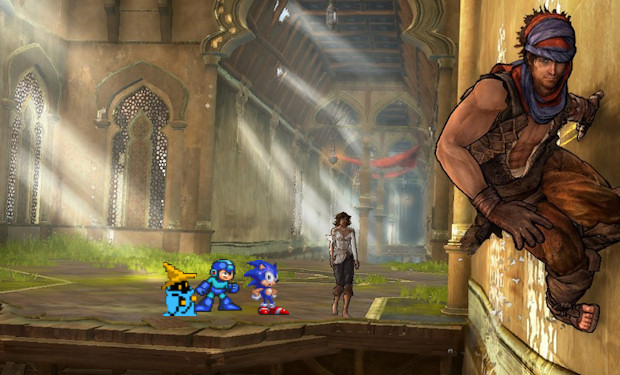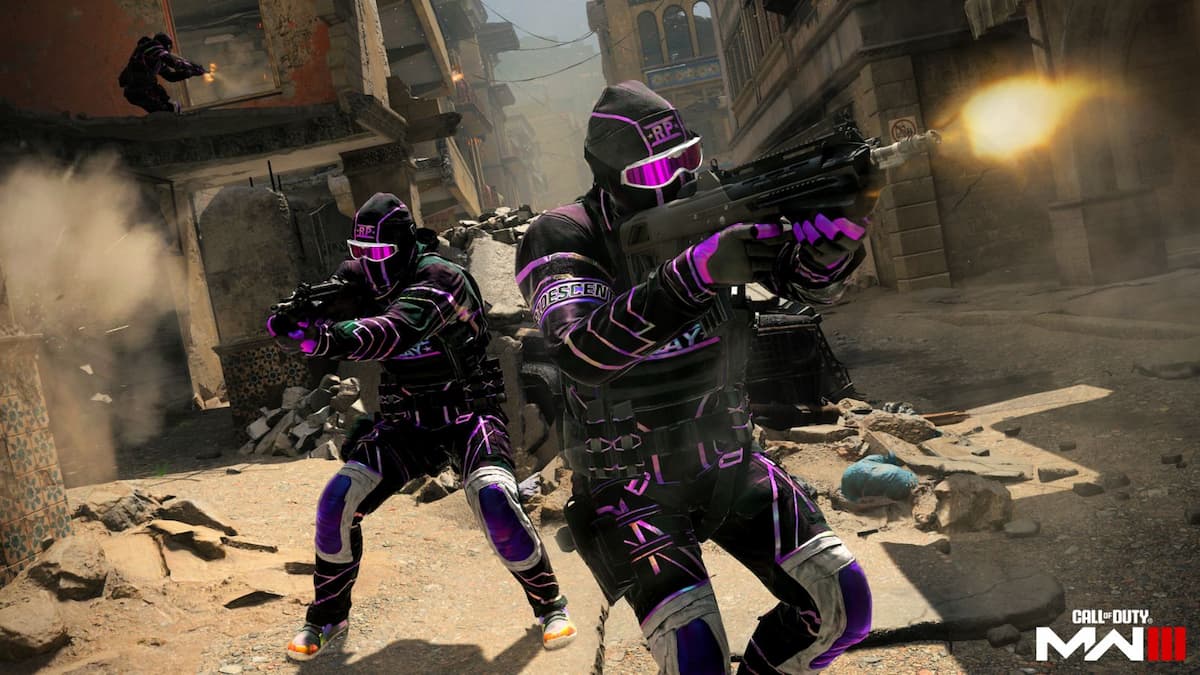As games have become more and more expensive, a focus on longevity has naturally become increasingly important. When we spend $60 on a videogame, we expect to get our money’s worth, and that means we don’t want a game that’s finished in less than three hours.
While we are quite right to demand a certain amount of gameplay to justify the money spent, it unfortunately means that developers have had to come up with creative time-wasting schemes that don’t give us the value we want, but merely create the illusion of value.
All too regularly, a game comes along that takes time-wasting to a whole new level, and you realize that what you’ve purchased is nothing but vapidity masquerading as substance, inconsequential padding that’s desperately trying to fill an arbitrary length quota with meaningless activities and regurgitated setpieces. Developers have almost made an art form of tricking consumers into believing they got their money’s worth.
In this list column, itself an ironically cheap and easy way of filling up article space, we pay tribute to some of the most obnoxious and blatant attempts at wasting a player’s time in the name of longevity. These are games that may advertise themselves as eight to fifty hour-long experiences, but typically only provide about thirty minutes of actual fresh material. Join us as we look at the ten cheapest ways of extending a game’s length.

1: Collecting Meaningless Shit
Notable Offender: Sonic Unleashed
Replayability is a magic word in the games industry. If your game has replay value, then you can be certain that money was well spent. However, some people confuse “replayability” with “forcing players to do the same thing over and over again until they throw the disc at a wall.” Popularized by Mario 64 but taken to absolute extremes by more recent games such as Sonic Unleashed, the whole “collect a convoluted amount of shiny things in old levels to unlock new ones” is one of the most lazy and obvious ways of falsely extending a game’s length.
Sticking with Sonic Unleashed as our prime example, a number of Sun and Moon Medals are hidden throughout each level. They can be incredibly well hidden, and even conflict with the main gameplay, since Sonic is usually too busy running fast to stop and hunt for obscure collectibles. You need both these Sun and Moon Medals to unlock night and day stages, respectively. Bear in mind that there are around 200 Sun and Moon Medals in the game each. Later levels can take hours of repeating old bits of gameplay ad nauseum in a meaningless search for shit, and just because Sonic Team wanted to make the game appear longer.
A game should be replayed because a player wants to replay it, not because they were forced to. A developer that uses this tactic clearly has no faith in his own ability to design a good game.

2: Grinding
Notable Offender: Most RPGs
Roleplaying games are famed for their length. Epic fifty-hour quests are boasted with glee on the back of many RPG packages, and players are sucked in by the promise of a game that will literally last them months. However, if you decide to discount the parts of an RPG where you are walking back and forth over a piece of map and randomly waiting to input the same commands until the number next to your name gets bigger, you’ll find that many of those fifty hours are absolutely nothing.
Grinding is one of the oldest tricks in the book. So popular is the idea of gaining experience points and strengthening a character that genres outside of RPGs have cottoned on and exploited it. Tacking on a grinding leveling system to a generic action game suddenly creates the illusion of depth, and keeps players hooked for longer as they level up their heroes in endlessly repetitive battles.
I enjoy RPGs and typically dig acquisition-of-power gameplay, but let’s not pretend that the idea of grinding is anything more than filler. It’s not fifty hours of epic questing if most of that “journey” is spent walking around outside a town for thirty of those hours.

3: Backtracking
Notable Offender: Prince of Persia
Why bother developing 50% of a game when you can just repeat the first 50% but at NIGHT TIME? Backtracking is an all-too common little scheme found in many action games, where a game is falsely extended by simply repeating levels, usually with a few quick and easy changes to the color scheme. Recent examples include X-Blades, which makes you go forward through the levels, then back through all of them, Devil May Cry 4, which repeats many levels with the Niero and Dante characters, and of course, the most recent Prince of Persia, which is just one big backtracking simulator.
The change of color and a few new enemies can obscure the lazy development, but most studios aren’t clever enough to hide their blatantly obvious recycling. When a game’s repetition accounts for an entire half of the experience, that’s just plain rubbish. Don’t even get me started on RPGs that make you fight your way to the heart of a dungeon, have a huge boss battle and then demand you FIGHT YOUR WAY BACK OUT AGAIN! DAMN YOU!

4: Reincarnation
Notable Offender: Breath of Fire: Dragon Quarter, Dead Rising
This is a rare technique, but no less irritating for it. Some games are designed to not be completed the first time around, and force players into a Groundhog Day series of reincarnations. These rare games allow players to carry over their increased stats with each new game, and think that then gives them carte blanche to extend the game’s length by making it so that you might as well keep dying, restarting the game, and getting stronger.
Making the player repeat the first hour of gameplay several times over is pretty clever, even if it is irritating. Also, I don’t care what anybody says, Dragon Quarter was a load of crap, and this was a big reason.

5: Repeated Animations
Notable Offender: Project Altered Beast
A nice and cheap way of filling up time is to make some sort of animation sequence, and then repeat it over and over and over and over and over and over and over and over again. The absolutely terrible Project Altered Beast had repetitive transformation FMVs every time you switched between human and beast form, which confused me since the game was so unbearable that decreasing the length would have worked in its favor.
Lengthy attack sequences in RPGs and various special moves in action games that take ages to charge up or perform are all guilty of doing this, and those extra seconds of animation can really pile up to make a game feel longer, even if the players themselves are bored of seeing the same old long-winded finishing move time and time again. Watching a sword go through a generic soldier’s face is great the first time, but it loses its appeal on the on the fortieth rehash.

6: Trial and Error
Notable Offender: Mega Man 9
I hate trial and error gameplay with a passion. It’s cheap design, and a big reason why old games seem to be so short when they once felt really long. A game designed to kill the player until they become trained to learn the one and only way to complete a level is just sub-par game design, in my opinion, and it takes far more intelligence to design a well balanced game that challenges without ambushing players.
Resident Evil 5 had a particularly inventive and infuriation method of doing this by sneaking instant-death Quick Time Events in the middle of cutscenes. Nearly all of them caught me off guard during the game because I was doing what most people do during a cutscene and watching them. Recent Sonic games also use Sonic‘s speed as a way of falling back on trial and error, since you need to play levels constantly to know when to turn and when not to fall into the ridiculously numerous pitfalls.
Many old school players love this kind of thing, and when Mega Man 9 came along, they openly wept with gratitude. I just don’t have time for that kind of design, unfortunately. Trial and error is bullshit.

7. Walking. Lots of Walking
Notable Offender: Gears of War
Why have gameplay when you can have walking? A number of action games have cottoned on to the fact that you can accumulate huge amounts of “play time” simply by making the character walk through parts of a level with absolutely no action whatsoever. I suppose we’re to marvel at the architecture or something, but it can get really dull and there are games out there who unashamedly add in extra, unnecessary segments of just … walking.
Gears of War invented a really good way of using this “nothing walk” mechanic. Epic Games didn’t even have to make impressive environments and long pathways to simulate the act of walking while doing fuck-all, they just made the characters walk really, really slowly. A number of times during the game, Marcus Fenix and pals all stop and put their fingers in their ears to talk to someone on a radio. Of course, the only way to talk on the radio is to move at a snail’s pace, and in doing so, you can add some impressive minutes to your game clock.
I expect to see that technique used more and more. A recent game I played (but cannot talk about due to embargo) has made liberal use of the tactic. Walking for the win!

8. The “Jason Voorhees” School of Boss Battles
Notable Offender: Devil May Cry
Very much like a good slasher film villain, some videogame bosses just don’t seem to die. However, unlike a good slasher film villain, the repetition of a boss battle is usually quite unwelcome. The Devil May Cry series is famed for its reliance on rehashing boss battles. Viewtiful Joe even went so far as to make you play the entire game’s worth of bosses, one after the other, right before the end battle. Capcom’s pretty good at this shit, I’d say.
Many of these battles are just straight repeats. The boss looks practically the same, does the same attacks, and is killed in the same way. They are ostensibly pointless exercises in tedium, especially since we’re not going to be intimidated by something we’ve already seen and beaten. I grant you that, sometimes, a repeated boss isn’t a bad thing. A deliberately recurring enemy or a boss that does different things whenever you face it can be quite entertaining. However, a boss battle that exists purely to distract you while the game does absolutely nothing new is shameful.

9. Opening Doors
Notable Offender: Most Action Games
I don’t generally consider Quick Time Events as cheap ways of extending a game’s length. No, I consider QTEs as cheap ways of doing cool things that the studio is too lazy to make more interactive. However, the QTE has spawned a bastard child that definitely has no justification in a game, other than to draw out the process of playing. How many times have you had to hammer one of your controller’s buttons just to open a door? How many times in just one game? Yes, merely opening a door has been turned into a beautifully wasteful experience.
Examples I can quickly pull from the top of my head include Viking: Battle For Asgard and THQ’s most recent Conan game. Both games make opening a door look like some Herculean effort, as the character goes through the same mundane animation while you repeatedly tap a single button. It’s not challenging, it’s not very fun, so why is it in my fucking videogame? The simple fact of the matter is that it doesn’t need to be in the game at all. Nobody has ever raved about the awesome “door opening mechanics” in a game, and nobody will until there is a miraculously awesome door opening mechanic. Hammering a button and watching a dreary animation is not awesome. It’s certainly not gameplay.
It amazes me that so many games have been able to do this, too, and they’re all getting away with it. This is mostly because it’s so boring and dull, that most players can’t be bothered to talk about it when they review or discuss the videogame as a whole. That almost qualifies as genius — a gameplay element so tiresome that you actually forget it exists, so can’t call the studio out on it.
Well, I’ve remembered it this time. There is no escape for rubbish faux-gameplay extensions.

10. The Valkyrie
Only Offender: Too Human
One could argue that the entirety of Denis Dyack’s magnum opus, Too Human, is a futile exercise in wasting time, but our friends at Silicon Knights chose to hammer that point home by introducing one of the most blatant, despicable and trashy little bits of false game longevity known to mankind — The Valkyrie.
In the spirit of this article, rather than present you with new material, I am just going to rehash a portion of our Too Human review. If repeating yourself to extend length is good enough for games, it’s good enough for this article:
Yes, ladies and gentlemen, I present to you the worst piece of game design I have had the displeasure of suffering through in the past five years. Every time you die, you are forced to watch a 25-second-long cutscene in which a Valkyrie descends and carries Baldur off. It is the same scene every time — the same animation, the same awful music, and the same length. All of it unskippable, and all of it happening often. It may not sound like much, but when you experience it for yourself, the frustration is almost unbearable. The game itself has been designed to kill you, and often, and one can only surmise that it’s because the developers have found this idea of the Valkyrie so important, so damn compelling, that we all have to pay attention to it over and over again. Well it’s not important, nor is it compelling, and it’s not clever in the least. If you are going to play Too Human, then it is advisable that you bring a book with you. You are going to need something to do during the regular, obnoxious periods of forced downtime.
It’s great because it combined a number of things we’ve already discussed. The basic principals of trial and error gameplay, reincarnation, lots of walking and repeated animations all rolled into one antagonizing piece of pigshit. Without the Valkyrie, Too Human might have been a bearable game.
It wouldn’t be very long, though.




